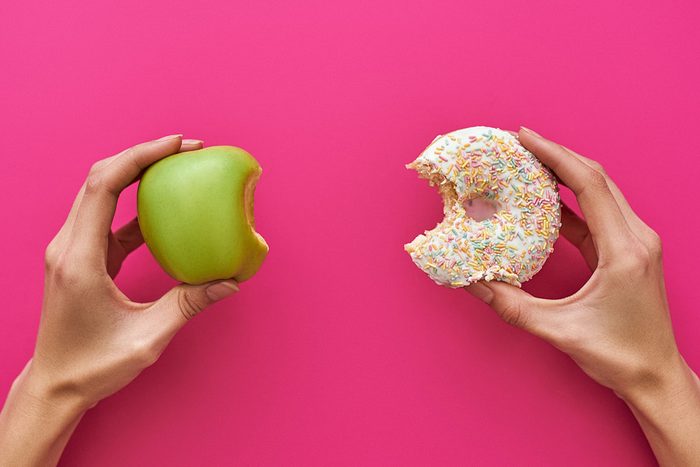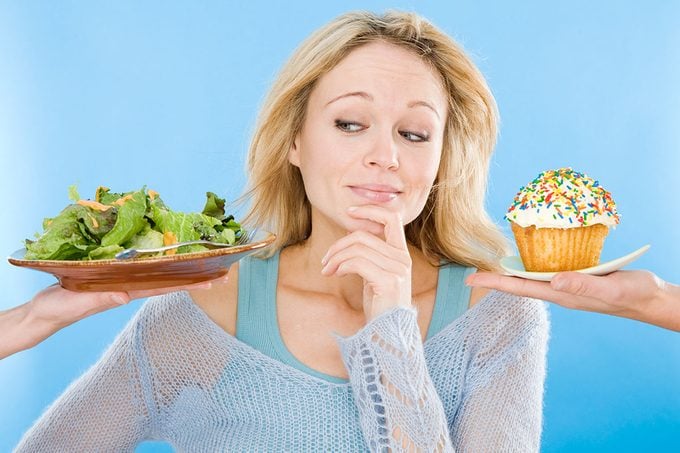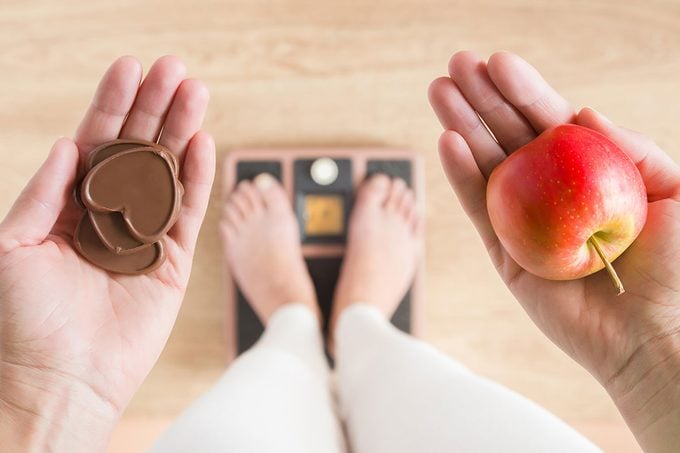What Is the “Eat What You Want, Add What You Need” Trend?
Updated: May 10, 2023

And whether or not it's worth trying it for yourself.
TikTok is a strange media beast. On one hand, it allows subject matter experts to share their knowledge with a wider audience than ever before. On the other, anyone can post their own “wellness” tips and gain massive traction. This makes it more critical than ever before to fact-check trends, especially those around complex subjects like weight loss.
One trend that has over 2.6 million hashtags and counting is the “eat what you want, add what you need” approach to eating. Because this trend has been popping up on For You pages across the country, I spoke to Dr. Amy Lee, Head of Nutrition for Nucific and an expert in weight control, obesity and nutrition, to identify the potential upsides and dangers of this style of eating.
What is the “eat what you want, add what you need” trend?
At its most basic, the “eat what you want, add what you need” trend stands for a method of eating in which one eats whatever they are craving and then adds healthy foods with essential proteins, nutrients and vitamins alongside it to “balance it out.”
@lizaslosingweight #duet with @hope_zuckerbrow #fyp #eatwhatyouwantaddwhatyouneed #adddontrestrict #weightloss #weightlosstips ♬ I Think I Like When It Rains – WILLIS
While many TikTokers offer this as general advice for viewers, the trend has gained particular attention as a possible method for those recovering from a binge eating disorder. A binge eating disorder is a serious condition in which one consumes large amounts of food and may feel unable to stop. According to Dr. Lee, “[s]ome people binge a couple of times a month and some do it every day… In binge eating, more days than not, you’re OK, but then there are days or hours where you get out of control and in one sitting acquire four to five times the calories of a normal meal.”
What are the positives of the “eat what you want, add what you need” trend?

Dr. Lee cites a few major positive areas of impact for the trend. First, she says, it promotes awareness of what you’re eating. “Maybe someone who comes across this video will realize, ‘I want to understand how to approach this method in a healthy way. It makes you question what you really want and what you really need,” she said. This awareness can lead viewers to make more intentional decisions about their diet.
Additionally, it discourages feelings of deprivation and gives the viewer permission to enjoy the foods they love. Because binge eating often “encourages a hiding behavior” and is done in secret, this may help the individual overcome feelings of shame attached to certain foods.
And lastly, the videos “let you know there’s a community out there and you’re not alone.” This may make it easier for individuals with disordered eating habits to speak about them openly with trusted loved ones and professionals.
What are the dangers of the “eat what you want, add what you need” trend?
The main danger of the trend, according to Dr. Lee, is that “[t]here’s nothing objective about it.” This risky ambiguity shows up in both the amounts of food to eat and the foods themselves.
First, Dr. Lee points out that “[t]here’s no direction in how much of what you want and how much of what you need” to consume in the videos. Quantities are not specified, so viewers could easily overeat the unhealthy foods they crave and skimp on the nutrients. Dr. Lee says, “It all comes down to portion control. Even the best thing you can eat that ‘sounds healthy,’ you could overeat it and now are just stacking calories.”
Additionally, TikTokers don’t define what foods are healthy or not. They assume that the foods we crave are unhealthy, but Dr. Lee retorts that she often craves acai bowls, which can be full of vital nutrients. And, even still, viewers can have misconceptions about the nutritious value of their foods. For example, a homemade acai bowl with fruits and nuts is very different from an acai bowl from a café, which could easily be loaded with sugars and fats. These loose definitions of a food’s “healthiness” “puts [viewers] in a blurry grey area.”
What do experts hope people will take away from the “eat what you want, add what you need” trend?

In short, what Dr. Lee wants people to take away from this trend is that “Binge eating is a real condition, and everyone should get professional help if they think they have [it].” These videos are best understood as one online resource to help viewers make sense of their eating habits. Then, in gaining this information about themselves, viewers can visit more reputable and authoritative experts to build a personalized action plan.
How should you treat a binge eating disorder?
According to Dr. Lee, the first step is “admit[ting] that it’s happening.” Then, “you have to be honest with your PCP [and] ask, ‘Are you comfortable treating me for this condition?'” If not, find another PCP. From there, “get a referral to a good psychologist or psychiatrist for a diagnosis, and then get all the right referrals to specialists that can help you,” such as dietitians or nutritionists. Finally, “[y]ou’ll need to set up your environment and make sure your family and friends are aware and supportive of your efforts.”
All in all, Dr. Lee wants to remind people that “[e]ating correctly is not an overnight thing, it’s an evolution.” She warns that “[i]t’s probably going to be a lifelong journey teasing out all the things that cause you to behave how you behave.” Still, the reward is a more intentional, joyful and healthy relationship with food, the effects of which can also be felt throughout your entire life.
Get The Healthy @Reader’s Digest newsletter and follow The Healthy on Facebook, Instagram, and Twitter. Keep reading:










